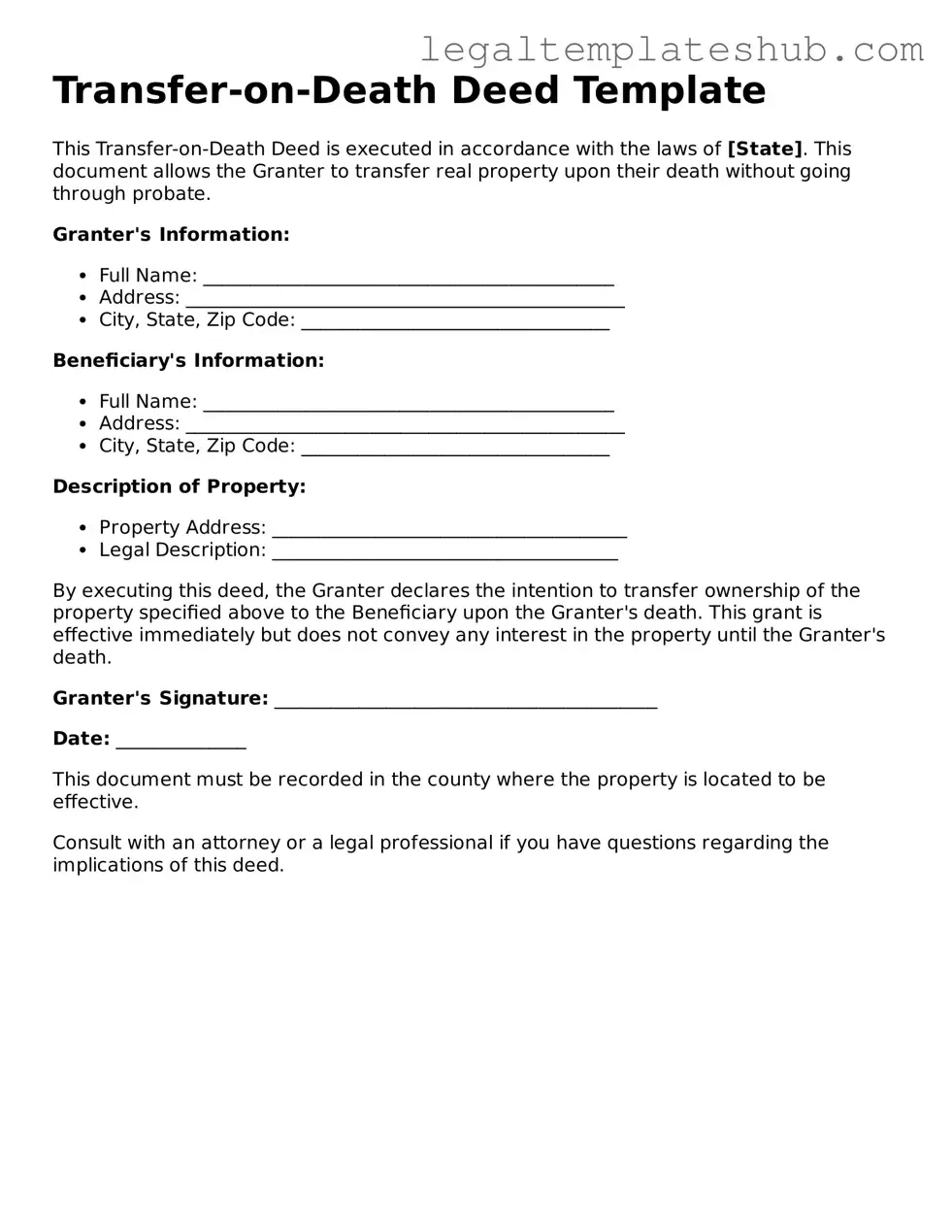Printable Transfer-on-Death Deed Template
A Transfer-on-Death Deed is a legal document that allows property owners to transfer their real estate to a designated beneficiary upon their death, bypassing the probate process. This form can simplify the transfer of property and provide peace of mind for both the owner and their loved ones. To learn more and fill out the form, click the button below.
Access Editor
